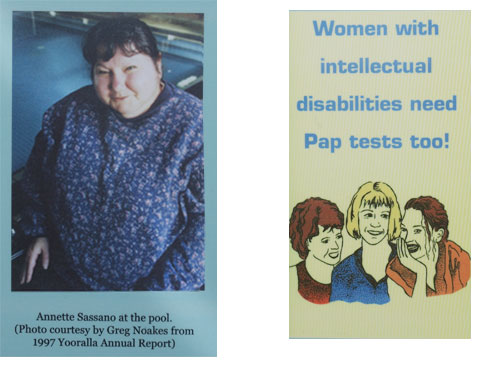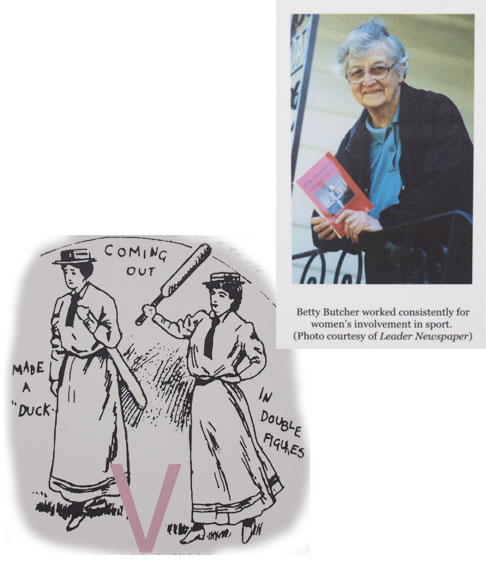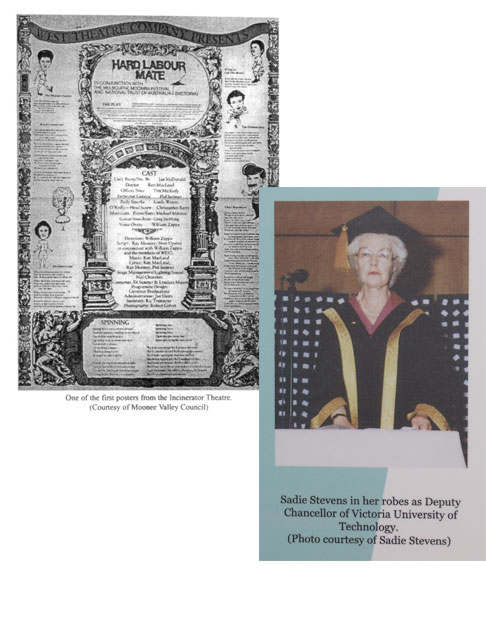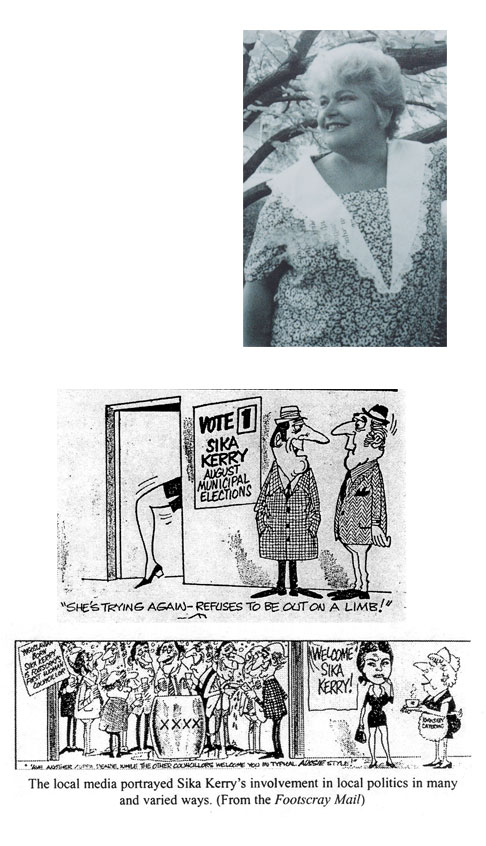Panel 3: Pioneers – These women broke new ground
Annette Sassano
Annette is one of the few people with muscular dystrophy who has been able to regain significant strength through intensive physiotherapy. She does not require physiotherapy now. Annette works part time as a peer educator with the Womens Health West support group for women with disabilities. She featured in their video, Paps I Should, a video which addresses issues around pap smears for women with disabilities. Annette has also been a consultant with Yooralla’s Active and Able program for 6 or 7 years. This is an education program for therapists and doctors to become more aware of the needs of people with disabilities. Annette was also very involved with the lima Lever Garden Centre in Coburg. The lima Lever Garden Centre provided accessible plots of land, within an urban setting. It was used by people to learn about plants and gardening or provide the opportunity to be exposed to a garden/natural environment. It was set up for people who have little chance to have a garden of their own to visit or tend.
You have to push yourself and try new things, no matter how hard they seem at first.
I love swimming. Due to an injury, I’ve had to stop for the moment but I’m keen to get back to it soon.

Betty Butcher
I have always felt comfortable living in the west, guess it goes back to my parents involvement in the community. There was sort of a community atmosphere in Footscray… home deliveries had a personal touch …the butcher delivered and stayed for a Cup Of tea.
(Gandolfo manuscript)
Betty played cricket as a young child developing a life time passion for the game. She grew up in a time when it was not the ‘norm’ for women to play sport. Betty was invited to be the manager in the first international women’s cricket match between Australia and India in 1975. She worked on involving more women in cricket and wrote three books recording the history of women’s cricket in Victoria. She felt that women’s sport was more accepted these days but the media still concentrated more on men’s sporting achievements. She was the President of Victorian Women’s Cricket Association in 1998 and a Life member of the Western Region Sports Assembly. She was also a trained accountant.
There have been many theories against girls playing sport. I remember one neighbour saying you shouldn’t let your daughter play cricket or she’ll get varicose veins.
My hero for a long time was Indira Gandhi. I met her through cricket. I never thought I would meet her but in 1975, the ‘Year of The Women’ when I toured India with the Australian team as their manager. I thought I’d write and tell her we were coming. I didn’t expect a reply. I had a message of a proposed meeting. I found her so approachable and we talked about our families. One of her sons was married to an Italian. That really intrigued me, I kept on saying ‘don’t tell me you go there and have pasta for tea’. She thought that was a great joke.
(Gandolfo manuscript)

Sadie Stevens
Sadie was born in Sydney and, after some moves, arrived in Essendon with her husband who was an ordained minister at Essendon Grammar. She became involved in the local community and assisted in the establishment of regional councils set up through the Whitlam Australian Assistance Plans. These assisted local communities to develop new services. She was a founding member of the Essendon Quota Club which aimed to bring women together to share knowledge and skills, combining women’s talents to achieve goals and to also provide training for public meeting procedures. This group worked on the development of the first Toy library in the area. Sadie was also approached by graduates of the Victorian College of the Arts to assist in the establishment of a community theatre group in the west. This led to her involvement in the restoration of the Walter Burley Griffin designed Incinerator Theatre. Sadie served on the Council of Footscray Institute of Technology and helped to lead it into the new Victoria University of Technology. She served two terms as Deputy Chancellor. Sadie is also on the Executive of Bodalla Aged Care Services, a Uniting Church Nursing Home.
/ have a strong commitment to excellence, equity and access and have been an advocate for educational opportunities in the Western region.

Sika Kerry
Sika was born in Yugoslavia in 1937, of Russian parents. In 1949, at the age of eleven she arrived in Australia with her parents. Her first memory of Australia is that it was ‘freezing’. Sika’s first few months were spent in the Bonegilla Migrant Hostel. Her family then moved to Melbourne. Some years later, Sika married and had two children. She was active on kindergarten and school committees and felt it was a natural progression when she nominated for Footscray Council in 1972. She became the first female councillor in Footscray’s 114 year history. Her motivation for joining Council came after she had difficulty getting them to respond to flooding in her street. She decided to go and see how they operated and noticed the lack of female representation. Sika and other women were encouraged by the Australian Local Government Women’s Association to run for a position on council at a time when it was area mainly dominated by men.
Being a migrant at the age of eleven was a very painful experience for me and it may be that somewhere, subconsciously this has made me do the things I do. Being stuck out in the suburbs with two little kids, I remember when my idea of a really good time in those days was going to a Bessemer party or a Tupperware party and when my son went to kindergarten, I got involved in the kindergarten. It was sort of a natural progression. I convened the plant stall and we’d have wig and wiglet nights you know that sort of Stuff.
(Gandolfo manuscript)

